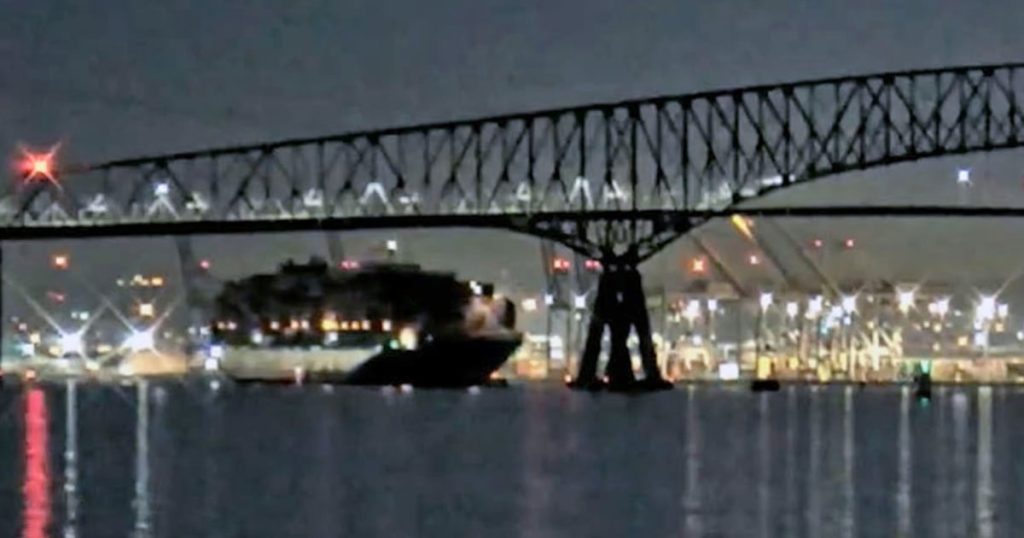The Francis Scott Key Bridge in Baltimore, which has been standing for nearly 50 years, collapsed in seconds after a cargo ship crashed into one of its support pillars. Dramatic video captured the moment when the 948-foot container ship, called the Dali, hit the bridge, causing a portion of it to crumble into the Patapsco River. The Coast Guard received a report of the collision and launched a response team, but the disaster unfolded quickly with the ship’s lights flickering and black smoke emerging from its chimney before impact. Seven people are currently missing in the river, with two rescued so far.
It took about seven seconds for the bridge to collapse entirely, with some parts sinking underwater while others remained above water. The wreckage of the bridge could be seen on top of the cargo ship, with sections of the bridge still visible above the water. All 22 crew members on board the ship, including two pilots, have been safely accounted for and no injuries were reported. The ship, bound for Sri Lanka, is managed by Synergy Marine Group, which stated that the exact cause of the incident is under investigation.
The loss of the bridge has had an emotional impact on the local community, with residents like Chantel DeBord expressing sadness at the devastation caused by the collapse. The bridge was a source of pride for many in Baltimore, with DeBord highlighting the implications for local industries such as crabbing and fishing, as well as the potential increase in taxes and traffic congestion resulting from the collapse. The tragedy has not only led to loss of life but also threatens the livelihoods of many in the area.
The search and rescue efforts continue for the missing individuals in the river, as officials work to determine the cause of the collision and subsequent collapse of the bridge. The images of the wreckage show the extent of the damage caused by the impact of the cargo ship on the bridge, sparking concerns about the economic and practical implications for the local community. The collapse of the Francis Scott Key Bridge serves as a stark reminder of the fragility of infrastructure and the potential consequences of accidents involving large vessels.
As investigations into the incident progress, authorities are focused on uncovering the factors that led to the collision and subsequent collapse of the bridge. The loss of such a vital structure has highlighted the vulnerability of infrastructure to unexpected events, underscoring the need for thorough safety measures and precautions to prevent similar tragedies in the future. The impact of the bridge collapse goes beyond physical damage, affecting the lives and livelihoods of individuals in the community and prompting calls for increased oversight and safeguards to prevent such disasters from occurring again.















